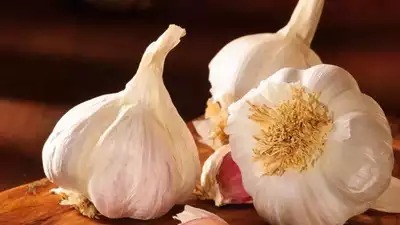In recent months, the escalating prices of kitchen staples such as onions and tomatoes have wreaked havoc on household budgets, creating financial challenges for many families. The latest addition to this trend is the soaring cost of garlic, which has significantly impacted household expenditures across the country.
Current reports indicate that garlic prices have surged, with the commodity being sold in the range of Rs 130-140 per kilogram. Higher quality garlic is commanding even steeper prices, ranging from Rs 220 to Rs 240 in wholesale markets. In retail markets across various regions, consumers are witnessing prices reaching up to Rs 400 per kilogram.
One of the contributing factors to this price surge is the unseasonal rainfall experienced over the past two months, exacerbating the challenges faced by farmers and contributing to a decrease in garlic supply.
This situation echoes the recent government intervention in onion prices, as onion exports were banned until March of the following year. The decision was prompted by retail prices exceeding Rs 80 per kilogram in the national capital. Although prices in mandis, or wholesale markets, were around Rs 60 per kilogram, the move aimed to stabilize the market and alleviate the burden on consumers.
Consumer Affairs Secretary Rohit Kumar Singh has expressed optimism that onion prices will see a decline by January. The government anticipates a reduction in prices to below Rs 40 per kilogram next month, compared to the current average price of Rs 57.02 per kilogram.
This trend of surging kitchen staple prices began a couple of months ago when tomato prices soared, disrupting household budgets as the cost of this essential vegetable surpassed Rs 250 per kilogram. The cumulative impact of rising prices for these kitchen staples has led to financial strain for many households.
The increase in garlic prices adds another layer of concern for consumers already grappling with elevated living costs. As these essential commodities become more expensive, households are forced to reconsider their monthly budgets, leading to potential adjustments in spending and consumption patterns.
While government interventions, such as the onion export ban, aim to mitigate price spikes, the underlying causes, such as unseasonal weather patterns affecting crop yields, remain challenges that need comprehensive solutions. Farmers, traders, and policymakers must work collaboratively to address these issues, ensuring the stability of food prices and the affordability of essential commodities for all sections of society.
As consumers navigate these challenging times, awareness of price fluctuations, prudent budgeting, and exploring alternatives become crucial strategies to cope with the impact of rising kitchen staple costs. Additionally, a focus on sustainable agricultural practices and supply chain resilience is essential to create a more robust and adaptable food ecosystem that can withstand unforeseen challenges in the future.


